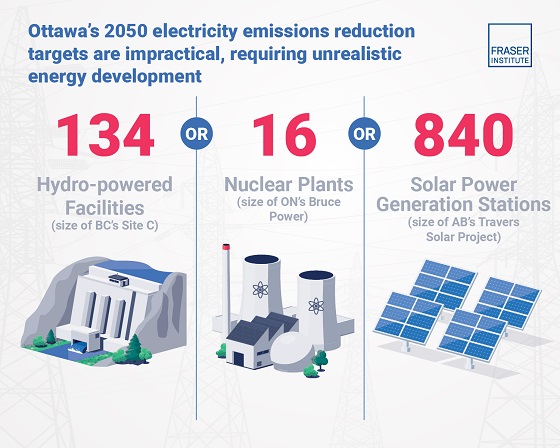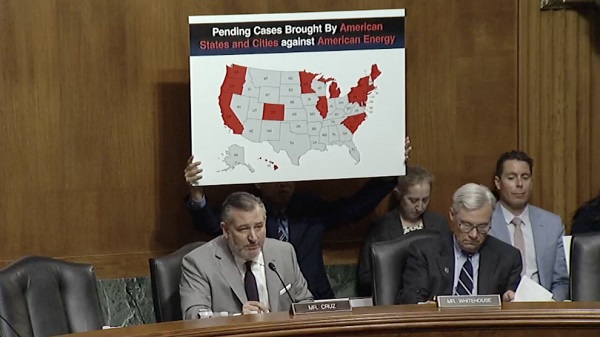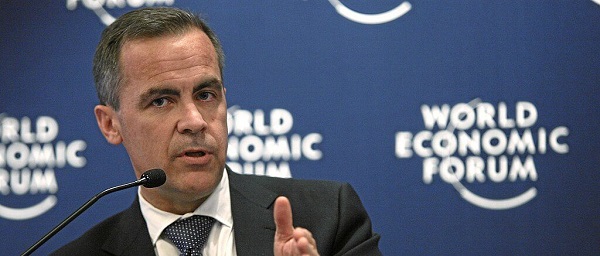Energy
Canada must build 840 solar-power stations or 16 nuclear power plants to meet Ottawa’s 2050 emission-reduction target

From the Fraser Institute
The federal government’s plan to eliminate greenhouse gas (GHG) emissions from electricity generation by 2050 is impossible in practical terms, finds a new study published today by the Fraser Institute, an independent, non-partisan Canadian public policy think-tank.
Due to population growth, economic growth and the transition to electrified transportation, electricity demand in Canada will increase substantially in coming years. “To meet existing and future electricity demand with low-emitting or zero-emitting sources within the government’s timeline, Canada would need to rapidly build infrastructure on a scale never before seen in the country’s history,” said Kenneth P.
Green, senior fellow at the Fraser Institute and author of Rapid Decarbonization of Electricity and Future Supply Constraints.
For example, to generate the electricity needed through 2050 solely with solar power, we’d need to build 840 solar-power generation stations the size of Alberta’s Travers Solar Project. At a construction time of two years per project, this would take 1,680 construction years to accomplish.
If we relied solely on wind power, Canada would need to build 574 wind-power installations the size of Quebec’s Seigneurie de Beaupre wind-power station. At a construction time of two years per project, this would take 1,150 construction years to accomplish.
If we relied solely on hydropower, we’d need to build 134 hydro-power facilities the size of the Site C power station in British Columbia. At a construction time of seven years per project, this would take 938 construction years to accomplish.
If we relied solely on nuclear power, we’d need to construct 16 new nuclear plants the size of Ontario’s Bruce Nuclear Generating Station. At a construction time of seven years per project, this would take 112 construction years to accomplish.
Currently, the process of planning and constructing electricity-generation facilities in Canada is often marked by delays and significant cost overruns. For B.C.’s Site C project, it took approximately 43 years from the initial planning studies in 1971 to environmental certification in 2014, with project completion expected in 2025 at a cost of $16 billion.
“When Canadians assess the viability of the federal government’s emission-reduction timelines, they should understand the practical reality of electricity generation in Canada,” Green said.
Decarbonizing Canada’s Electricity Generation: Rapid Decarbonization of Electricity and Future Supply Constraints
- Canada’s Clean Electricity Regulations (Canada, 2024a) require all provinces to fully “decarbonize” their electricity generation as part of the federal government’s broader “Net-Zero 2050” greenhouse gas emissions mitigation plan.
- Canada’s electricity demands are expected to grow in line with the country’s population, economic growth, and the transition to electrified transportation. Projections from the Canada Energy Regulator, Canadian Climate Institute, and Department of Finance estimate the need for an additional 684 TWh of generation capacity by 2050.
- If Canada were to meet this demand solely with wind power, it would require the construction of approximately 575 wind-power installations, each the size of Quebec’s Seigneurie de Beaupré Wind Farm, over 25 years. However, with a construction timeline of two years per project, this would equate to 1,150 construction years. Meeting future Canadian electricity demand using only wind power would also require over one million hectares of land—an area nearly 14.5 times the size of the municipality of Calgary.
- If Canada were to rely entirely on hydropower, it would need to construct 134 facilities similar in size to the Site C power station in British Columbia. Meeting all future demand with hydropower would occupy approximately 54,988 hectares of land—roughly 1.5 times the area of the municipality of Montreal.
- If Canada were to meet its future demand exclusively with nuclear power, it would need to construct 16 additional nuclear plants, each equivalent to Ontario’s Bruce Nuclear Generating Station.
- Meeting the predicted future electricity demand with these low/no CO2 sources will be a daunting challenge and is likely impossible within the 2050 timeframe.
Energy
China undermining American energy independence, report says

From The Center Square
By
The Chinese Communist Party is exploiting the left’s green energy movement to hurt American energy independence, according to a new report from State Armor.
Michael Lucci, founder and CEO of State Armor, says the report shows how Energy Foundation China funds green energy initiatives that make America more reliant on China, especially on technology with known vulnerabilities.
“Our report exposes how Energy Foundation China functions not as an independent nonprofit, but as a vehicle advancing the strategic interests of the Chinese Communist Party by funding U.S. green energy initiatives to shift American supply chains toward Beijing and undermine our energy security,” Lucci said in a statement before the Senate Judiciary Subcommittee’s hearing on Wednesday titled “Enter the Dragon – China and the Left’s Lawfare Against American Energy Dominance.”
Lucci said the group’s operations represent a textbook example of Chinese influence in America.
“This is a very good example of how the Chinese Communist Party operates influence operations within the United States. I would actually describe it as a perfect case study from their perspective,” he told The Center Square in a phone interview. “They’re using American money to leverage American policy changes that make the American energy grid dependent upon China.”
Lucci said one of the most concerning findings is that China-backed technology entering the U.S. power grid includes components with “undisclosed back doors” – posing a direct threat to the power grid.
“These are not actually green tech technologies. They’re red technologies,” he said. “We are finding – and this is open-source news reporting – they have undisclosed back doors in them. They’re described in a Reuters article as rogue communication devices… another way to describe that is kill switches.”
Lucci said China exploits American political divisions on energy policy to insert these technologies under the guise of environmental progress.
“Yes, and it’s very crafty,” he said. “We are not addressing the fact that these green technologies are red. Technologies controlled by the Communist Party of China should be out of the question.”
Although Lucci sees a future for carbon-free energy sources in the United States – particularly nuclear and solar energy – he doesn’t think the country should use technology from a foreign adversary to do it.
“It cannot be Chinese solar inverters that are reported in Reuters six weeks ago as having undisclosed back doors,” he said. “It cannot be Chinese batteries going into the grid … that allow them to sabotage our grid.”
Lucci said energy is a national security issue, and the United States is in a far better position to achieve energy independence than China.
“We are luckily endowed with energy independence if we choose to have it. China is not endowed with that luxury,” he said. “They’re poor in natural resources. We’re very well endowed – one of the best – with natural resources for energy production.”
He said that’s why China continues to build coal plants – and some of that coal comes from Australia – while pushing the United States to use solar energy.
“It’s very foolish of us to just make ourselves dependent on their technologies that we don’t need, and which are coming with embedded back doors that give them actual control over our energy grid,” he said.
Lucci says lawmakers at both the state and federal levels need to respond to this threat quickly.
“The executive branch should look at whether Energy Foundation China is operating as an unregistered foreign agent,” he said. “State attorneys general should be looking at these back doors that are going into our power grid – undisclosed back doors. That’s consumer fraud. That’s a deceptive trade practice.”
Energy
Carney’s Bill C-5 will likely make things worse—not better

From the Fraser Institute
By Niels Veldhuis and Jason Clemens
The Carney government’s signature legislation in its first post-election session of Parliament—Bill C-5, known as the Building Canada Act—recently passed the Senate for final approval, and is now law. It gives the government unprecedented powers and will likely make Canada even less attractive to investment than it is now, making a bad situation even worse.
Over the past 10 years, Canada has increasingly become known as a country that is un-investable, where it’s nearly impossible to get large and important projects, from pipelines to mines, approved. Even simple single-site redevelopment projects can take a decade to receive rezoning approval. It’s one of the primary reasons why Canada has experienced a mass exodus of investment capital, some $387 billion from 2015 to 2023. And from 2014 to 2023, the latest year of comparable data, investment per worker (excluding residential construction and adjusted for inflation) dropped by 19.3 per cent, from $20,310 to $16,386 (in 2017 dollars).
In theory, Bill C-5 will help speed up the approval process for projects deemed to be in the “national interest.” But the cabinet (and in practical terms, the prime minister) will determine the “national interest,” not the private sector. The bill also allows the cabinet to override existing laws, regulations and guidelines to facilitate investment and the building of projects such as pipelines, mines and power transmission lines. At a time when Canada is known for not being able to get large projects done, many are applauding this new approach, and indeed the bill passed with the support of the Opposition Conservatives.
But basically, it will allow the cabinet to go around nearly every existing hurdle impeding or preventing large project developments, and the list of hurdles is extensive: Bill C-69 (which governs the approval process for large infrastructure projects including pipelines), Bill C-48 (which effectively bans oil tankers off the west coast), the federal cap on greenhouse gas emissions for only the oil and gas sector (which effectively means a cap or even reductions in production), a quasi carbon tax on fuel (called the Clean Fuels Standard), and so on.
Bill C-5 will not change any of these problematic laws and regulations. It simply will allow the cabinet to choose when and where they’re applied. This is cronyism at its worst and opens up the Carney government to significant risks of favouritism and even corruption.
Consider firms interested in pursuing large projects. If the bill becomes the law of the land, there won’t be a new, better and more transparent process to follow that improves the general economic environment for all entrepreneurs and businesses. Instead, there will be a cabinet (i.e. politicians) with new extraordinary powers that firms can lobby to convince that their project is in the “national interest.”
Indeed, according to some reports, some senators are referring to Bill C-5 as the “trust me” law, meaning that because there aren’t enough details and guardrails within the legislation, senators who vote in favour are effectively “trusting” Prime Minister Carney and his cabinet to do the right thing, effectively and consistently over time.
Consider the ambiguity in the legislation and how it empowers discretionary decisions by the cabinet. According to the legislation, cabinet “may consider any factor” it “considers relevant, including the extent to which the project can… strengthen Canada’s autonomy, resilience and security” or “provide economic benefits to Canada” or “advance the interests of Indigenous peoples” or “contribute to clean growth and to meeting Canada’s objectives with respect to climate change.”
With this type of “criteria,” nearly anything cabinet or the prime minister can dream up could be deemed in the “national interest” and therefore provide the prime minister with unprecedented and near unilateral powers.
In the preamble to the legislation, the government said it wants an accelerated approval process, which “enhances regulatory certainty and investor confidence.” In all likelihood, Bill C-5 will do the opposite. It will put more power in the hands of a very few in government, lead to cronyism, risks outright corruption, and make Canada even less attractive to investment.
-

 Business7 hours ago
Business7 hours agoRFK Jr. says Hep B vaccine is linked to 1,135% higher autism rate
-

 Alberta1 day ago
Alberta1 day agoAlberta Independence Seekers Take First Step: Citizen Initiative Application Approved, Notice of Initiative Petition Issued
-

 Crime20 hours ago
Crime20 hours agoNational Health Care Fraud Takedown Results in 324 Defendants Charged in Connection with Over $14.6 Billion in Alleged Fraud
-

 Crime2 days ago
Crime2 days agoSuspected ambush leaves two firefighters dead in Idaho
-

 Health19 hours ago
Health19 hours agoRFK Jr. Unloads Disturbing Vaccine Secrets on Tucker—And Surprises Everyone on Trump
-

 Alberta1 day ago
Alberta1 day agoWhy the West’s separatists could be just as big a threat as Quebec’s
-

 Business2 days ago
Business2 days agoCanada Caves: Carney ditches digital services tax after criticism from Trump
-

 Bruce Dowbiggin1 day ago
Bruce Dowbiggin1 day agoThe Game That Let Canadians Forgive The Liberals — Again


